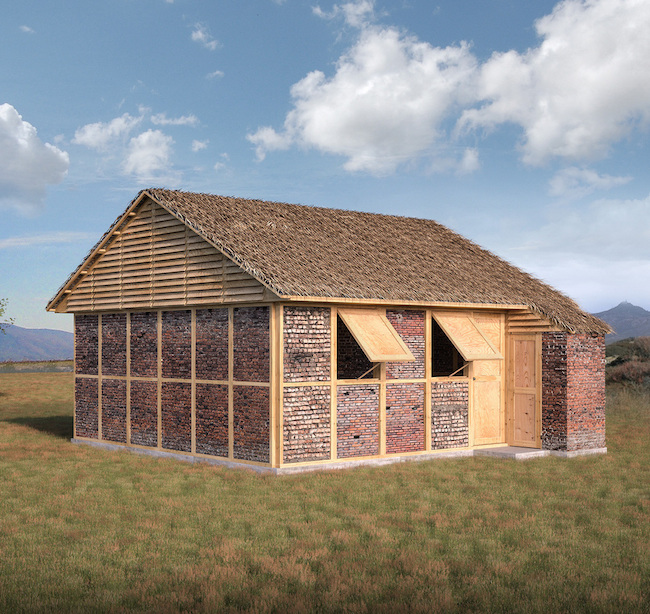One of the worst disasters in recent memory for the region, the earthquake that struck Nepal in April killed more than 9,000 people and injured about 23,000. That disaster is still being felt today; hundreds of thousands of people were left without homes. A Pritzker Prize-winning architect is stepping up again to help people who were displaced from their homes.
Japanese architect Shigeru Ban, who previously helped with disaster relief efforts in New Zealand, Sri Lanka and Japan, is launching a prototype emergency home this month for people affected by the earthquake.
The modular homes, according to Dezeen, are built using rubble left behind from the earthquake. Ban takes his sourcing of handy materials further: the roof for the modular home is built using a truss system of cardboard tubes and is covered with a plastic sheet.


Relief homes designed by Shigeru Ban.
In addition to being cheap and easy to make, the modular shelters are designed so that anyone can complete construction on the homes. From the architect:
“This system can be assembled by connecting modular wooden frames (3ft x 7ft or 90cm x 210cm) and infilling with rubble bricks. This simple construction method enables anyone to assemble the wooden frames very quickly and if a roof (a truss made of local paper tubes) is secured on top, and the wooden structure covered with a plastic sheet, people can immediately begin to inhabit the shelters. Afterwards, people can stack the rubble bricks inside the wooden frames and slowly complete the construction themselves.”
This isn’t the first time Shigeru Ban used paper as a quick fix for disaster relief homes. He gave a TED talk in 2013 about his choice of materials for houses in Haiti, Rwanda and Japan.
Any thoughts about this post? Share yours in the comment box below.

Kobe emergency relief housing by Shigeru Ban Architects.


Add your valued opinion to this post.